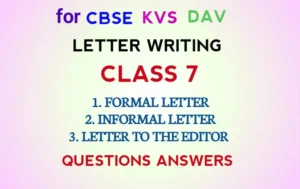Looking to improve your grammar for exams or professional writing? This guide on Subject-Verb Agreement covers 22 must-know rules with practical examples and exercises. Whether you’re a student or a professional, mastering these rules will help you avoid common mistakes and enhance your language skills. Boost your accuracy and confidence with these essential lessons!
Subject-Verb Agreement
The term ‘Subject-Verb Agreement’ refers to the grammatical rule that ensures the subject and verb in a sentence match in number. This means singular subjects require singular verbs, and plural subjects take plural verbs. These Subject-Verb Agreement Rules apply across all tenses to maintain grammatical correctness.
Subject-Verb Agreement Rules with Examples
Discover the essential subject-verb agreement rules with clear examples. These rules explain different situations where subject-verb agreement is crucial for building grammatically accurate sentences. Master these rules to improve your writing and communication skills.
Rule 1:
Verbs agree with the subjects in Number and Person. The subject of a sentence acts either as a Noun or as a pronoun or noun equivalent. Subject pronouns and nouns agree with the verbs as follows.
a. Subject pronouns agree with the verbs
Pronouns may be of different persons and numbers and agree with the verbs as shown in the following.
Examples:
| Person | Singular Number Subject | Plural Number Subject |
| 1st | I am (Be verb) I was (Be verb) I have (Have verb) I had (Have verb) I write (Action verb) | We are (Be verb) We were (Be verb) We have (Have verb) We had (Have verb) We write (Action verb) |
| 2nd | You are (Be verb) You were (Be verb) You have (Have verb) You had (Have verb) You write (Action verb) | You are (Be verb) You were (Be verb) You have (Have verb) You had (Have verb) You write (Action verb) |
| 3rd | He is (Be verb) She is (Be verb) It is (Be verb) He has (Have verb) She has (Have verb) He had (Have verb) She had (Have verb) He writes (Action verb) She writes (Action verb) She wrote (Action verb) He wrote (Action verb) | They are (Be verb) They were (Be verb) They had (Have verb) They write (Action verb) They wrote (Action verb) |
b. Subject nouns agree with the verbs
Nouns are namining words and all nouns are third person but they may be either singular or plural number and agree the verbs as follows.
Examples:
| Person | Singular Number Subject | Plural Number Subject |
| 3rd | Mary is (Be verb) Sujan was (Be verb) Tiger has (Have verb) God had (Have verb) Alok writes (Action verb) Soumi wrote (Action verb) | Mary and Kali are (Be verb) Amit and Sudha were (Be verb) Amit and Sumi have (Have verb) Kajol and Tony had (Have verb) Steve and John write (Action verb) Alan and David wrote (Action verb) |
Rule 2:
When the subjects are in the singular form, the verbs will also be in the singular.
Examples:
(1) Mary sings a song.
(2) He is a man of word.
(3) Sumit enjoys the game.
Rule 3:
When the subject consists of two or more nouns or pronouns joined by ‘and’, the verb and pronoun will be in the plural number
Examples:
(1) Air and water are necessary for survival.
(2) Sumita and I were going to visit the Taj.
(3) John and Harris were absent yesterday from school as they were ill.
Rule 4:
Practically, subjects indicating the same person or thing take singular verbs. If the article is used before the first noun or pronoun joined by ‘and‘, it refers to the same person or thing and in that case, the singular verb is used. If the article is used before each noun or pronoun then they refer to a different person or thing and then a plural verb is used.
Examples:
(Two nouns refer to one person)
(1) The headmaster and secretary has decided to hold a meeting in his room.
(2) The Author and publisher, Mr. Desai, is in town to inaugurate the Book Fair.
Examples:
(Two nouns refer to two different people)
(1) The author and the publisher were not present at the meeting.
(2) The headmaster and the secretary have decided to hold a meeting in their room
Rule 5:
When the Subjects express a single idea or the same meaning, Verbs, and Pronouns will be Singular in form.
Examples:
(1) Slow and steady wins the race.
(2) Bread and butter is his only food.
(3) Her hard work and dedication has paid off.
(4) The comfort and luxury provided by machines has made people lazy.
In the above examples, two nouns either can be the same meaning or express one single idea. Therefore in such sentences, we use a singular verb
Rule 6:
A verb must agree with its Subject in Number and Person. Sometimes, the verb agrees with its number with a noun near it instead of with its proper subject. This we call an Error of Proximity and we should avoid this.
Examples:
(1) The cost of luxury goods has gone up.
(2) The quality of the mangoes is not good.
(3) The presence of so many men is encouraging.
(4) The result of his HS Exam is not up to the mark.
(5) The people of our country are still fighting against the deadly virus.
Rule 7:
The name of a thing or a country though plural in form, takes a singular verb.
Examples:
(1) The United States of America is a rich country.
(2) The Folk Tales of Arabia is a good book.
Rule 8:
In the position of Nouns and Pronouns of different persons, the 2nd person stands first, the 3rd person stands second, and the 1st person stands last.
Examples:
(1) You, John, and I have been rewarded.
Rule 9:
Normally, subjects followed by Each’, ‘Every’, ‘No’, ‘Many a’, ‘Either’, ‘Neither’ ‘Everyone’, ‘No one’, ‘Nobody’, and ‘One’, ‘More than One’ take a singular verb.
a. When ‘Each’, ‘Every’ or ‘No’ is placed before the subject (noun) joined by ‘and’, the pronoun and the verb should be Singular.
b. Even when ‘each’, ‘every’, or ‘no’ is put before each noun, the verb is singular.
c. ‘Many a’, ‘Either’, and ‘Neither’ is also followed by Singular Verbs.
d. ‘More than one’, though plural in sense takes a singular noun and singular verb after it.
Examples:
(1) Each girl and each boy was given a mango.
(2) No man and no woman has been found there.
(3) Every planet and every star revolves around its orbit.
(4) Each man, woman, and child was wounded.
(5) Many a man does not know his own ability.
(6) Many a man has not seen the scenic beauty of the Himalayas.
(7) Neither statement is true.
(8) Either of the girls is intelligent.
(9) Neither of them is honest.
(10) Each of the eggs is broken.
(11) Everyone in the class is going for a picnic.
(12) Either is fine with me.
(13) One of the eggs is broken.
(14) More than one boy has been fined.
(15) More than one book has been bought.
Rule 10:
‘No’ or ‘Not’ agree with the same number as the noun or pronoun preceding ‘and’. If ‘no’ or ‘not’ is placed after the conjunction, ‘and’ in a sentence, the verb and the pronoun agree with the same number as the noun or pronoun preceding ‘and’.
Examples:
(1) Two leaves only, and no branch are required.
(2) A stick, and not a string, is needed.
Rule 11:
When the subject of a sentence consists of two nouns or pronouns that are joined by ‘As well as’, ‘together with’, ‘with’, along with’, the verb agrees with the first Noun/Pronoun.
Examples:
(1) The captain as well as his crew members was polite.
(2) The captain along with his teammates has played well.
(3) I as well as Sushama am going for a picnic.
(4) Samir together with his friends is playing.
(5) He with his brothers is to go.
(6) The members, as well as the president of the club, have come to the meeting.
(7) The crew members as well as the captain were polite.
Rule 12:
When two subjects of a sentence are joined by ‘Either … or’, ‘Neither … nor’, and ‘or’ ‘not only …. but also’, the verb agrees with the subject closest to it.
Examples:
(1) Either Preeti or Sausamya is at home.
(2) Either Preeti or the children are at home.
(3) Neither the manager nor his assistant is present at the meeting.
(4) Neither he nor his friends were going to the party.
(5) Either you or Seema is going to clean the room.
(6) Neither Sove nor you are going out tonight.
(7) Either my friends or I am going to buy this book.
(8) Not only Ravi but his friends also are coming to the party.
(9) Not only his friends but also he has been asked to do the work.
When two subjects of a sentence are joined by ‘Either … or‘, ‘Neither … nor‘, and ‘or‘ ‘not only …. but also‘, the verb agrees with the subject closest to it/with the latter subject.
Rule 13:
Phrases like – ‘a number of’, ‘a group of’, ‘a lot of ‘, ‘the majority of ‘, ‘ a great deal of ‘, ‘most of’, ‘a variety of’, ‘None of the’, ‘Plenty of’, ‘a series of’ can take singular verb for amount/quantity and plural verb for number.
Examples:
(1) None of the work has been completed. [work – amount; was – singular verb]
(2) None of the strategies have worked.[strategies – number; have – plural verb]
(3) A lot of energy is ruined on finding treasure.
(4) A lot of books have been written on home remedies.
(5) A variety of music is available.
(6) A variety of music albums are available.
(7) Plenty of help has been offered to the poor family.
(8) Plenty of trees were uprooted in the stoem last night.
(9) A group of girls are playing in the field.
(10) A group of us have decided to go for a picnic on Sunday next.
(11) A number of books are on the table.
(12) A group of men are doing their works.
(13) A lot of trouble is caused by communalism.
(14) A lot of problems are caused by unemployment.
(15) The majority of the damage is easy to repair.
(16) The majority of criminals have fle way.
(17) Three-fourths of the work is done.[work – amount; is – singular verb]
(18) Three-fourths of the men are dead.[men – a number; are – plural verb]
(19) Half of our work has been done.
(20) Half of the apples were bad.
(21) There are heaps of corpses.
(22) There are lots of chocolates on the table.
(23) Lots of people think so.
(24) The greater part of the land is uncultivated.
(25) The greater part of the pineapples are rotten.
(26) A series of unfortunate events leads to unexpected outcomes.
Rules 14:
The words – ‘Several’, ‘Many’, and ‘All’ agree with plural verbs
Examples:
(1) All my friends are coming to the party.
(2) Many of the eggs are broken.
(3) All are present in the meeting.
(4) All is lost in the fire.
Rules 15:
A Collective noun takes a singular verb if taken as a whole and a plural verb when taken separately.
Examples:
A. Collective Noun as a whole takes singular verb
(1) The swarm of bees is buzzing around the garden.
(2) A herd of elephants is roaring around freely.
(3) The class is large.
(4) The crowd looks quite pleased with the magician’s performance.
(5) A bunch of keys has been stolen.
B. Collective Noun used separately takes plural verb
Examples:
(1) The audience are requested to take their seats.
(2) The Board has agreed to grant a bonus to its (not, their) employees.
(3) The mob do (not, does) not know their mind.
Rule 16:
Some nouns are plural in form but singular in meaning. We use singular verbs with such nouns. e.g. Mathematics, Statistics, Measles, Physics, Bilards, News, etc.
Examples:
(1) Physics is a very interesting subject.
(2) Billards is fast becoming popular among youngsters.
Rule 17:
Some Nouns are singular in form but plural in meaning takes Plural verbs.
Examples:
(1) The people of the locality are protesting against frequent power cuts.
(2) The cattle were grazing on the farm.
(3) The police are questioning a man.
Rule 18:
Class nouns always take singular verbs.
Subject Verb-Agreement Rules with Examples
(1) The stationery was available at a cheap price at the store.
(2) The new furniture is pretty expensive.
(3) The food delivered here was very delicious.
(4) The scenery is beautiful.
Rule 19:
Nouns relating to weight, measure, amount, and time/distance or the collective number take singular verbs.
(1) Five years is a pretty long time.
(2) Ten kilos of milk was consumed in just one day.
(3) A hundred rupees is not a big amount for him.
(4) Only one-fourth of the total police force was deployed in the area.
(5) Fifty rupees is enough for me.
(6) Twenty shillings makes one pound.
(7) Three miles is a long distance.
(8) Eight annas was the price of the thing.
Note: But Twice two is four” and “Twice two are four” are equally correct.
Rules 20:
The verb remains singular when we join Two mathematical figures with ‘and‘
Subject Verb-Agreement Rules with Examples
(1) One and one makes two.
(2) Two and two make four.
[Both are correct usage nowadays]
Rule 21:
Conditional sentences can present challenges in subject-verb agreement, particularly when dealing with hypothetical situations. The verb should agree with the implied subject, as shown below:
Incorrect: “If he was here, he’d lend you a hand.”
Correct: “If he were here, he’d lend you a hand.”
The verb “were” is correct as it corresponds to the hypothetical situation.
Rule 22:
When an infinitive, a Gerund, a Verbal Noun, a clause, or a phrase is the subject, the verb is in the third person singular number.
(1) “To learn new languages is essential.”
(2) Swimming is a good exercise.
(3) That he is ill is known to me.
(4) The writing of speech is not an easy task.
(5) Success at any cost was his aim.
Subject-Verb Agreement Exercises
Exercise 1
In each of the following sentences supply a verb in agreement with its Subject.
1. She and her father ………………. gone to ……………… village.
2. The coach and captain ………………………. Come to the field.
3.The black and white …………… ( cow/cows) were sold.
4. No man and no women…………been found there.
5. The long and the short of the story………….. this.
6. Two pence only and no book ………… required.
7. Neither the students nor the teacher …….. coming.
8. Neither he nor his friends …………. reading now.
9. Suman with his classmates …………….. gone to watch the movie.
10. Either I or they ……….. in fault.
Exercise 2
In each of the following sentences supply a verb in agreement with its Subject.
11.It ……… I who ……. guilty.
12.Each of the boys …………….. given a chocolate.
13.Fifty rupees …………… enough for me.
14.The mob …………… (do/does) not know their mind.
15.One in ten boys …………….. done this sum.
16. Everybody thinks ….….………. are innumerable.
17. To take pay and then not to do the work ………. dishonest.
18. The cost of the luxury goods ………….. gone up.
19. The Jury …………. unanimously declared him guilty.
20.The committee …………… divided in their opinions.
Solved Worksheet of Subject-Verb Agreement
Exercise 1
In each of the following sentences supply a verb in agreement with its Subject.
21. Everyone of the bus’s passengers ………………….. wounded.
22. One or the other of those fellows ……………………. played trick.
23. A good man and great politician ………………… dead.
24. The accountant and the cashier ………………… been arrested.
25. The famous juggler and conjurer………………. unwell to perform.
26. Plutarch ‘s Lives ……………………. interesting book.
27.Decency and decorum ……………….. not found here.
28. Neither of the two women ………………….. clever.
29. Either Shila or her sisters …………………… responsible.
30. Honour and glory …………………….. his reward.
Exercise 2
In each of the following sentences supply a verb in agreement with its Subject.
31. Many a woman ………………..there.
32. Every one of the cinema halls ………………… full .
33.Neither you nor your sisters ………………… to blame.
34. Fire and water …………………… not agree.
35. He and l …………………… playing.
36. The ship with its crew …………………………. lost.
37. Justice as well as human consideration ………………………. what is demanded.
38. The king as well as his ministers ………………………… angry.
39.. Each of my aunts …………………. in Kolkata.
40. Each man and each woman ………………… given a shawl.
Subject Verb Agreement Answer:
1. have; their 2. has. 3. cows. 4. Has. 5. is. 6. are. 7. is. 8. are. 9. has. 10. are.11. is; {was}. 12. (was/is].
13. is. 14. do. 15. has.16. they. 17.is. 18. has . 19. is . 20. is . 21. is 22. has. 23. [was. 24. have 25. (was) 26.
is. 27. is. 28. is 29. are 30. is . 31. is . 32. is. 33. are. 34. does 35 .are . 36. 9was 37. ..was 38. .was 39. …was) 40. was
FAQs: Subject-Verb Agreement Rules
Q: 1. What is subject-verb agreement and examples
Ans: Subject-verb agreement indicates the application of different forms of Number, Person of verbs according to the Number & Person of subjects in sentences.
Example:
Ram is an intelligent boy.
You are an intelligent boy.
Q: 2. What are the 5 rules of subject-verb agreement?
Ans: The 5 rules of subject-verb agreement are as follows.
(1) Two singular subjects joined by ‘and‘ take plural verbs and pronouns:
Example: Air and water are necessary for survival.
(2) Verbs and Pronouns should be in Singular for subjects indicating the same person or thing:
Example: Author and publisher, Mr. Desai, is in town to inaugurate the Book Fair.
(3) Verbs and Pronouns are Singular for Subjects expressing a single idea or the same meaning:
Example: Slow and steady wins the race.
(4) Nouns plural in form but singular in meaning take singular verbs:
Example: Physics is a very interesting subject.
(5) Some Nouns are singular in form but plural in meaning takes Plural verbs:
Example: The cattle were grazing on the farm.
Q: 3. What is the subject-verb agreement?
Ans: Subject-verb agreement is a grammatical rule that ensures the verb in a sentence agrees in number with its subject. It helps maintain sentence clarity and effective communication.
Q: 4. Why is subject-verb agreement important?
Ans: Subject-verb agreement is crucial to avoid confusion in sentences. Misusing verbs can lead to unclear communication and grammatical errors.
Q: 5. How can I identify the subject and verb in a sentence?
Ans: To identify the subject, ask “who” or “what” is performing the action in the sentence. To find the verb, ask “what” is happening in the sentence.
Q: 6. Are there exceptions to subject-verb agreement rules?
Ans: Yes, there are exceptions, such as with irregular nouns and certain collective nouns.
Q: 7. What are some common mistakes in subject-verb agreement?
Ans: Common mistakes include using the wrong verb tense, forgetting to adjust verbs for singular or plural subjects, and confusion with collective nouns.
Q: 8. How can I improve my subject-verb agreement skills?
Ans: Practice regularly, read extensively, and refer to grammar resources to strengthen your subject-verb agreement skills.
Q: 9. What are some common mistakes in subject-verb agreement?
A: Common mistakes include confusion with singular and plural nouns, indefinite pronouns, collective nouns, and agreement with quantifiers.
Q: 10. How can I avoid subject-verb agreement errors?
A: Familiarize yourself with the rules of agreement, pay attention to the subject’s number, and be cautious with tricky expression
Q: 11. Can I use singular “they” in formal writing?
A: While it’s becoming more acceptable, ensure you use it correctly and maintain subject-verb agreement.
Q: 12. What should I do if I’m unsure about subject-verb agreement in a sentence?
A: Review the rules, clarify the subject, and ensure the verb matches the number and context.







